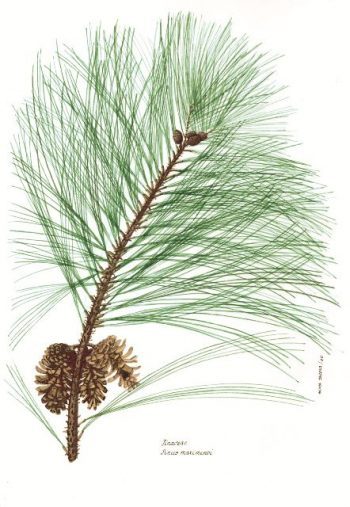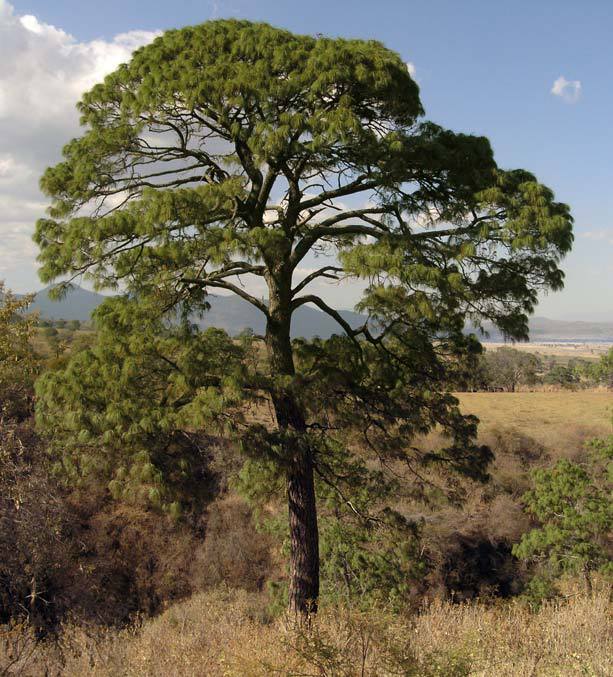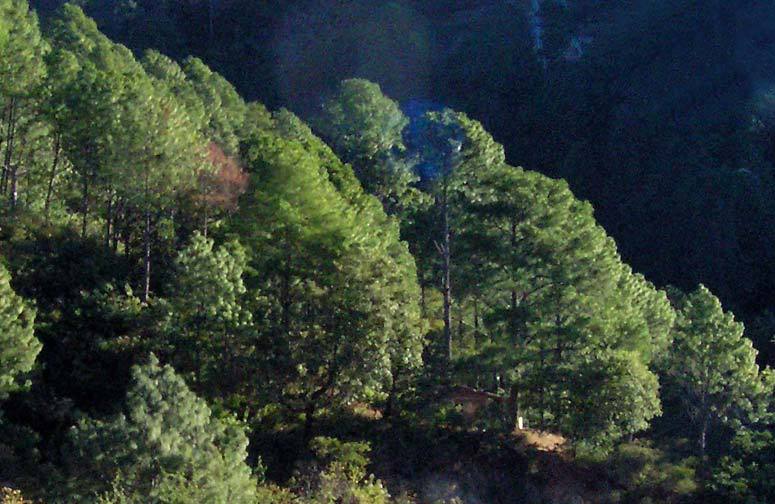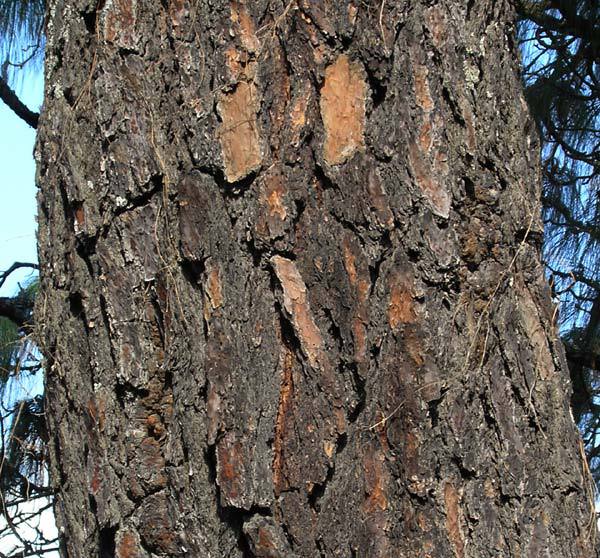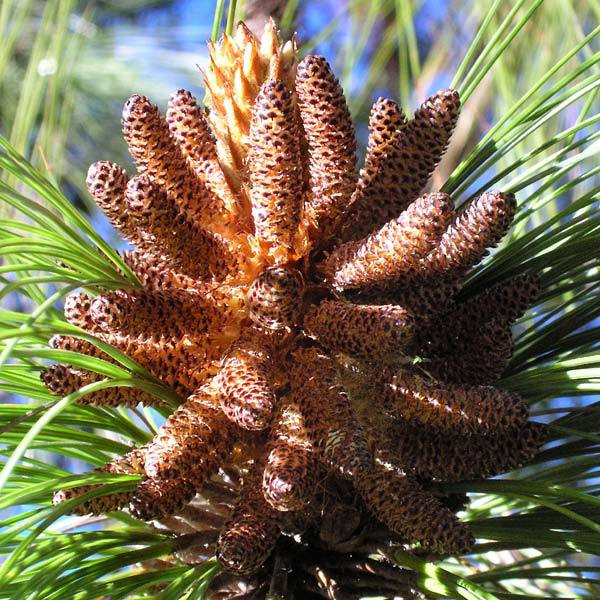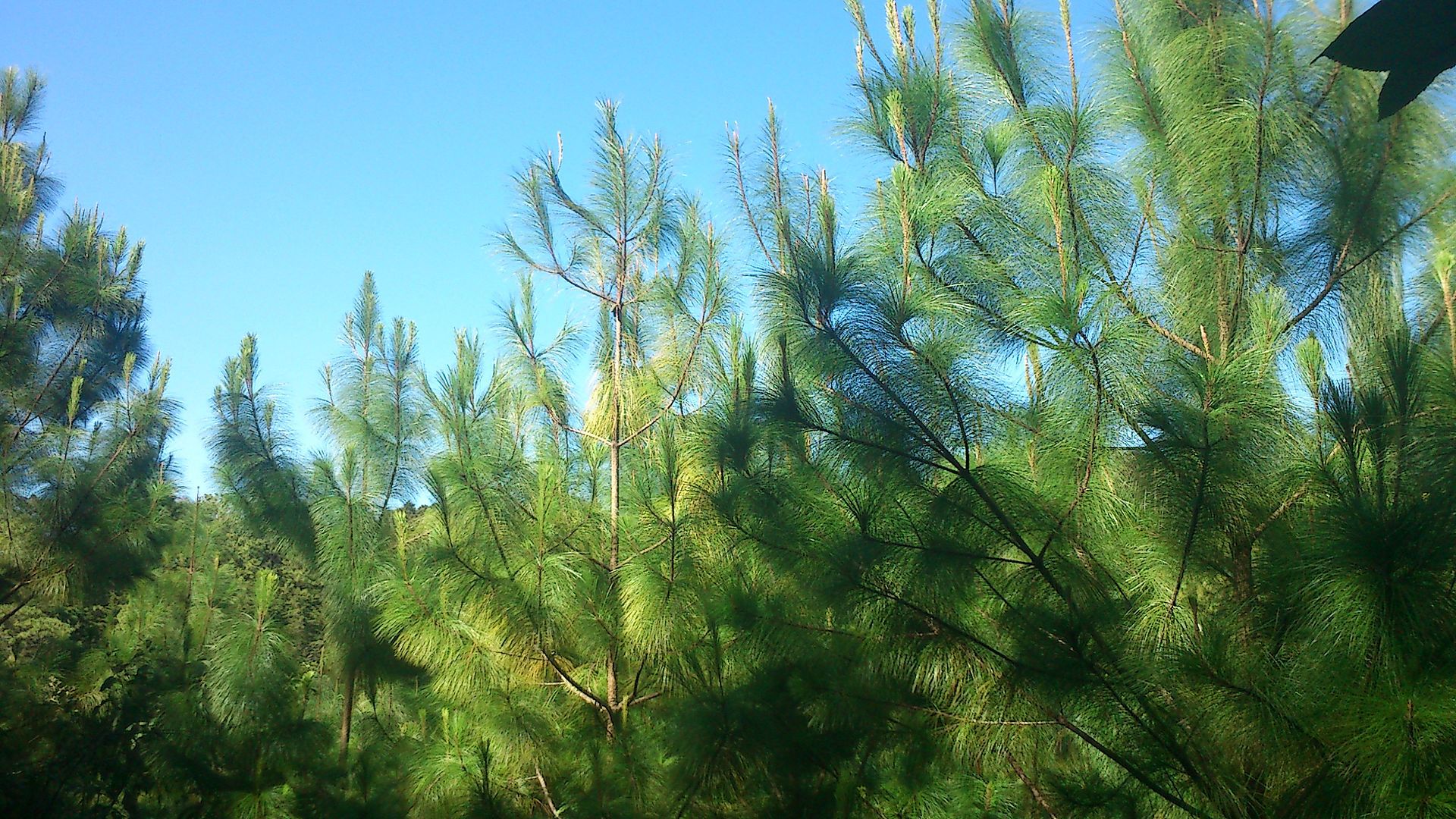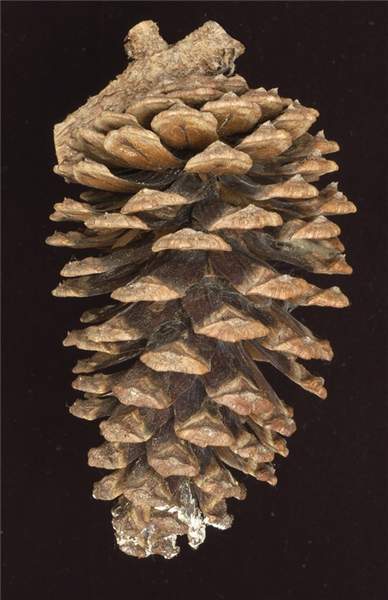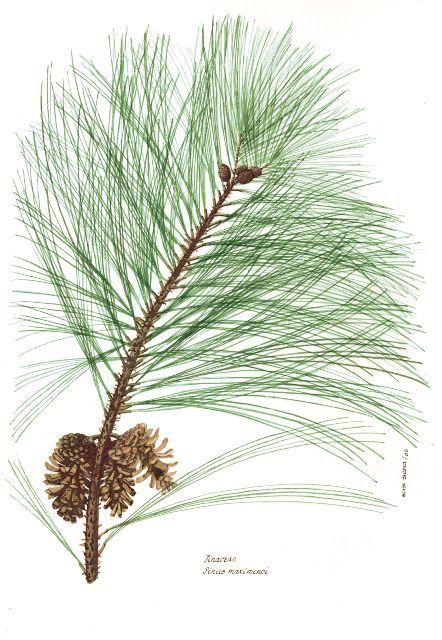subgenus Pinus, section Trifoliae (Duhamel), subsection Ponderosae (Louden).
Pinus maximinoi, as described in 1966 by H.E. Moore, in Nomenclatural notes on the cultivated conifers, is commonly known as Maximino's pine; as well as pino candelillo, pino canis, or pino llorón in the Spanish language. The species honors Maximino Martinez (1888 - 1964), the Mexican botanist who arguably did more to document the Mexican conifers than anyone else in history.
Description. Maximino's pine is an evergreen coniferous species of tree that grows to mature heights of 65 to 100 feet (20 - 35 m); with a straight, round, usually single trunk measuring 28 to 36 inches (70 - 90 cm) in diameter, measured at breast height; and a thick, rounded open crown, with typical crown depth about 50% of tree height.
- Branches are horizontal, often whorled, developing into an open pyramid. Branchlets are long and slender, flexible, slightly drooping, with prominent decurrent pulvini.
- Bark at first, is smooth and gray-brown in color, later becoming rough and deeply fissured into large gray-brown plates.
- Leaves (needles) persist for 2 to 2.5 years on the tree, borne in fascicles of 5 (rarely 4 or 6). Each needle is very slender and drooping, measuring 8 to 14 inches (20 - 35 cm) long by 0.024 to 0.044 (0.6 - 1.1 mm) thick. They are light to glaucous green in color with serrulate margins visible from under a 10X lens. Lines of stomata appear in 2 to 3 lines on all three surfaces.
- Foliar sheaths are orange-brown in color fading to gray, measuring 0.6 to 1 inch (15 - 25 mm) long, and are persistent for the life of the foliar bundle.
- Pollen cones are produced crowded near the proximal end of new leading (sometimes lateral) shoots. They are cylindrical in shape, measure 1.2 to 1.6 inches (30 - 40 mm) long, by 0.2 to 0.32 inch (5 - 8 mm) wide, colored pink-brown, subtended by subulate-lanceolate brown bracts.
- Seed cones are borne in groups of 3 to 4, colored light brown in their first year, maturing in their second year on 0.4 to 0.6 inch (10 - 15 mm) long peduncles. Individual cones are asymmetrically ovoid to long-ovate in shape, colored red-brown, measuring 2 to 4 inches (5 - 10 cm) long by 1.6 to 3.2 inches (4 - 8 cm) wide when open. Peduncle is oblique to the cone axis. Cones mature in winter, shed seeds, and soon fall.
- Seed scales number 120 to 160 per cone. Each is thin, flexible and weak. Apophyses are flat with a light transverse keel. Umbos are small and flattish, with a small early-deciduous prickle.
- Seeds are colored dark brown, measuring 016 to 0.24 inch (4 - 6 mm) long by 0.12 to 0.16 inch (3 - 4 mm) wide with a pale yellow-brown, articulate wing, measuring 0.64 to 0.8 inch (16 - 20 mm) long by 0.16 to 0.32 inch (4 - 8 mm) wide.
Distribution. This species is native to Mexico - Chiapas, Colima, Durango, Guerrero, Hidalgo, Jalisco, México, Michoacán, Morelos, Nayarit, Oaxaca, Puebla, Sinaloa, Tlaxcala, Veracruz; Guatemala; also in Honduras; El Salvador; and northwestern Nicaragua. The Sinaloa population is disjunct. Mainly occurs in mountains, but has wide ecological amplitude that includes an early seral or gap-pioneer role in wet subtropical forest, canopy species in cloud forests, or as a member of drier pine-oak forests and woodlands. It occurs at elevations of 3,000 to 6,000 feet (900 - 1,800 m) above sea level, paradoxically occurring at the highest elevations near its northwest range limits. This pine is found growing on widely varying but usually well-drained soils in areas with 36 to 100 inches (900 - 2,500 mm) of annual precipitation (summer maximum).
Hardy to USDA Zone 10 - cold hardiness limit between 30° and 40°F (-1° and +4.4°C).
